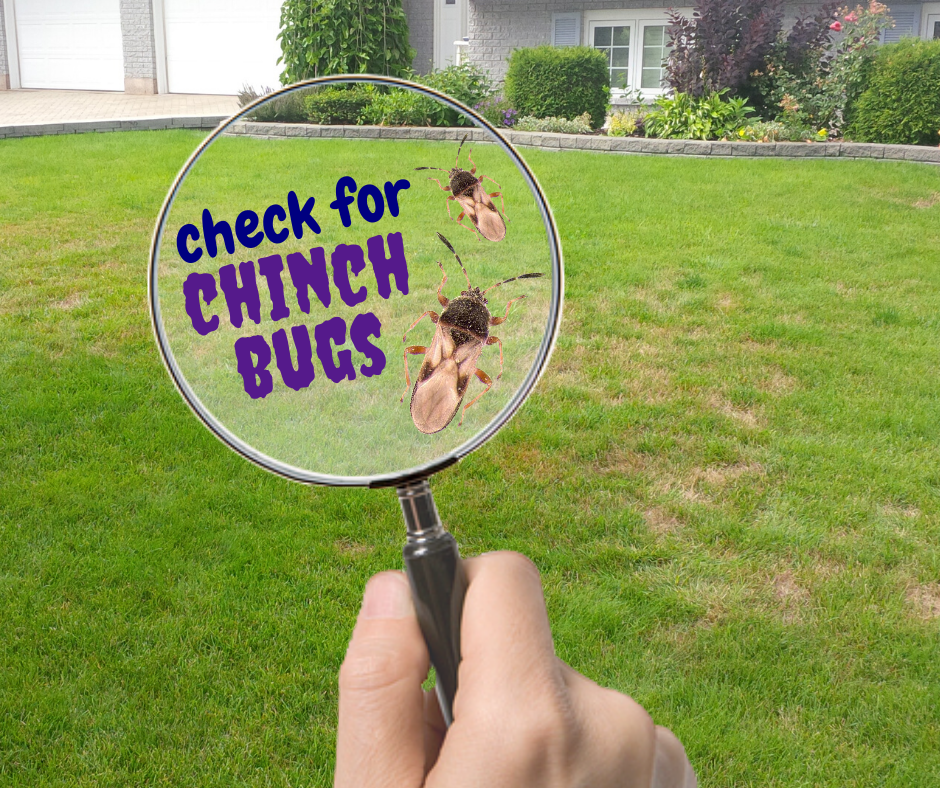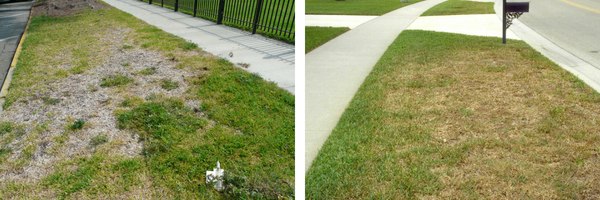
Pronounced (CH-inch), Chinch bugs are the smallest destructive turfgrass insect by size, but the damage they can cause is anything but! Even under close inspection most turf managers need a magnifying glass to see the tiny chinch bug clearly.
Chinch bugs are notorious surface feeding insects and when they are left untreated, chinch bugs can completely devastate large sections of a lawn causing permanent and irrecoverable damage.
The tiny chinch bugs live in the lawns thatch and cause damage by piercing and sucking the juices directly from the crown, stem, and blades of the turf. This causes major stress to the plant and eventually it dies and turns yellow.
Diagnosing chinch bug damage is challenging - especially considering they are active during the summer months between June until August when heat and drought stress is also very prevalent. Damage appears almost identical to drought stress and unless close inspection is conducted, chinch damage can easily be mistaken for normal drought stress.

To the naked eye the stressed turf looks the same, but the major difference is chinch damage will not recover when the heat and drought conditions subside. Chinch damage is permanent, so treating chinch bugs when they are in their nymphal life stage is important and most effective.
Chinch bugs can be identified in their nymphal life stage by their bright red coloured body with a distinct white stripe across its back. Targeting control treatments during the nymphal life stage will prevent further damage from occurring.

Contact your local Nutri-Lawn to learn more about the products and services available in your market.








